After nearly a year of usage, I’ve got a pretty good handle on the Cannondale SmartSense system. The idea with the SmartSense platform is that a bike can be equipped with cycling rearview radar, lights (front and back), speed sensors, and even a power mount for your bike GPS/computer, all run from a single detachable USB-C battery – and all configurable via a single app. Beyond that the lights just turn on the moment you start moving, and at the end of the ride your rides automatically save and upload to the app and various platforms like Strava. It’s super clever.
Cannondale first rolled this out on the Synapse road bike series about a year ago, and has since expanded it to their Topstone gravel bikes. As with most fancy gadgets, this isn’t available on every model, though, it’s also not just the most expensive $10K bikes either.
Now as usual for this site, I’m not really going to focus on things like lateral stiffness or other bike-specific review things. Instead, this is all about the electronics platform of SmartSense and how all these components work. In my case, I was testing it inside the frame of the $9,500 Synapse 1 RLE, but functionally all these components work just the same in the far cheaper bike models. It’s all the other fancy stuff on the bike that makes it expensive, not the SmartSense components. Also, this is/was a loaner bike that they’ll be picking back up shortly.
With that – let’s get into it!
The Hardware:
To begin with the obvious, this requires a Cannondale bike. Specifically, the Synapse (road) and Topstone (gravel) lineups today. What’s interesting though is that not all pieces are available on all bikes. The idea though is that you can glance at a bike name and see which parts it has. Here, look at this (small portion) of the Synapse lineup. These three models have three different levels of stuff:
Each bike you’ll see has an assigned suffix made up of three letters:
R = Radar
L = Lights
E = Electronic shifting
[No letters = nothing burger]
So as we see in the above screenshot from their site, the:
Synapse Carbon 2 RLE: Has Radar, Lights, and Electronic shifting
Synapse Carbon 3 L: Has just Lights
Synapse Carbon 4: Ain’t got nothing fancy
Pretty straightforward, right?
In this case, the bike I tested is the Cannondale Synapse 1 RLE, with Shimano Dura-Ace Di2 R9250, though oddly not a power meter at that $9,050 price point. On the bright side, given how bad the Shimano R9200 power meter is accuracy-wise, that’s probably not a loss. This review isn’t about the bike itself, but here’s the full spec page if you want it.
Now, let’s talk hardware. In this case, the electronic shifting element, while called out in the naming, really isn’t part of the SmartSense platform. So a bike has to have either RLE or L to be part of this club. And the first portion of the club is the so-called ‘Cradle’. That’s this piece here in the frame of the bike that the battery will snap into:
The cradle is effectively the brains of the operation. It controls the lights, the radar, houses the battery, and all the smarts. In fact, unlike a ‘normal’ Garmin Varia radar where the communications bits are in the unit at the back, here, they are in the cradle. The same goes for the battery, there is no second/extra battery at the back (or front) – everything depends on this singular battery that snaps in:
There’s a locking mechanism on the side, and then four LED’s on it. The battery has bi-directional USB-C charging, so it can either be charged, or charge other things (like a phone) if you wanted. It’s 2665mAh. Cannondale says the goal is to also sell bikes without the cradle but allow for upgrades later. In this case, it’s just a small tools compartment instead. You can buy all the pieces individually on their site already.
Now heading to the back of the bike, the cradle connects to the radar. This is a Garmin Varia radar, but in an entirely different form factor. As noted, there is no battery back here, nor any ANT+/BLE communications. That’s all internal to the cradle. Again, one battery and communications point to rule them all. In the below picture, the radar is the oblong black section with the word ‘Garmin’ on it.
The radar functions identically to any other Garmin radar, as it’s still Garmin internals inside. You can see the radar portion along the bottom, and then the red light bar wrapping around the top.
This 85-lumen rear tail light is actually made by Lezyne, not Garmin. To which you’re probably like: “Why didn’t Cannondale just use Garmin for the lights too?”. The answer is a blend of technical and demonstration. A small portion of the decision was the specific light specs that they wanted, but the far bigger portion is that Cannondale said they purposefully selected multiple vendors to both force everyone into an interoperable system, and demonstrate to future expansion vendors that it’s not just a one-vendor-trick pony. Further, Cannondale says that by having that consolidation of all the ‘brains’ and communications into the cradle, it means they can continue adding features down the road – rather than depending on the vendors to do so.
There is also an accelerometer in that rear radar, which lets the system trigger deceleration warnings to drivers (blinking the lights).
Next, sliding up to the front of the bike, you’ve got the 350-lumen front light. This too is made by Lezyne. It also has on the back a small ambient light sensor, so it can detect when you’re going through a tunnel and increase the lights on the entire system automatically. This is configurable using the app (which is seamless as part of the cradle).
The one downside though is as of now, there’s no ANT+ lighting controls here. There is for the radar, but not the lights. Practically speaking though, this didn’t really matter to me. First, there’s a simple button on the back of the front light to adjust settings in real-time if I wanted to, and second, because the bike lights turn on the moment the wheels start rolling, I never really had a need to manually turn them on. Nonetheless, Cannondale says they aren’t against adding it, and may see it in a firmware update down the road.
But it’s on the back of the front light that things get really interesting. At first you’ll notice the wired connection running out of it to the central battery. However, there’s also two ports on right and left sides. These two ports allow expansion down the road, and since release a year ago, we’ve already seen the first of such expansions.
Last summer when Garmin announced the Garmin Edge Explore 2, they also announced the new power mount for it. Garmin previously has a battery pack setup, but this new mount allowed continuous power from an external source. In this case, the Cannondale’s existing mount is compatible with it, but you need the components from the $100 Garmin Power Mount Kit (some small plastic bits, plus the charging puck portion). Luckily though, the default cable type in the power mount kit is for Cannondale, allowing it to plug into the spare port on the front light. Albeit the cabling system isn’t proprietary to Cannondale though, it’s the same one used on plenty of other e-bikes out there from Higo (this is true for the entire SmartSense cabling).
In fact, the few extra plastic bits in the box were also adapters allowing it to thread up through the included Cannondale out-front mount, providing constant power to your Garmin Edge device.
This is compatible with not just the Garmin Edge Explorer 2 (bundled power mount units), but also a slew of Garmin Edge units over the years that have had power support. This includes the the Garmin Edge 530, Edge 830, Edge 1030, Edge 1030 Plus, and Edge 1040. You can see here the power icon in the upper left shown as plugged in, while concurrently it shows it connecting to the Varia radar on the bike as I spun the front wheel to wake it up.
Finally, the last piece of the puzzle is the smallest but arguably ne of the most important – the front wheel sensor. This senor is a rebranded Garmin Speed Sensor V2, and is in charge of waking up the rest of the system when the wheel spins. After about two revolutions it wakes up the cradle and battery pack, which in turn wakes up the bike lights and radar.
However, it also records the distance and time of all your rides. This is a feature of the Garmin Speed Sensor V2, and Cannondale puts it to use here by syncing all this data to the app. Which is a great segue to the next section.
The App:
The Cannondale app isn’t required for day to day usage, but, is required for configuring and customizing settings. Essentially, the app has three core areas:
A) Historical listing of every ride you do automatically (uses the wheel sensor)
B) Bike/light/radar/battery/everything settings (and can store multiple bikes)
C) Ability to record a ride on the phone
Starting on the first tab, you’ve got your historical ride data. This data automatically populates from the wheel sensor. Remember, the wheel sensor isn’t tied to the main battery, so even if you have a battery-less ride, the wheel sensor still does its thing (on a coin cell battery).
One minor caveat here is that if you were to accidentally pair this to a Garmin app or head unit, that has the potential (depending on settings) to nullify your rides in the Cannondale app. This is because the sensor is actually a rebranded/tweaked Garmin Speed Sensor V2, which allows cached memory. But to Garmin’s apps/devices, it just looks like a Garmin sensor – so, it tries to download that cache. I had this problem a few times over the last year as I tested new Garmin devices and it’d try to pair to it (if I accidentally didn’t say no). The best solution is honestly to let the Garmin device pair to the sensor, and then set it to be disabled on your Garmin device. Meanwhile, for the phone said, just say no on the Garmin app. But really, don’t overthink it, you’ll be fine (I’m just including this tidbit in case someone is having an issue down the road, here’s the easy fix).
The rides automatically sync after activating the front wheel again post-ride. Meaning, after you finish a ride it won’t instantly show up, as it doesn’t really know that your ride is done (versus stopping at a light). You can check out the total details from the ride, as well as add photos, rename, etc…
You can also connect to Strava, Garmin, and Apple Health if you want more detailed information, pulling it into the Cannondale app. The sync is bidirectional for both Strava & Apple Health, but one-way for Garmin Connect (from Garmin)
Let’s head onto the good stuff though – the settings portion. This is under the ‘Garage’ tab, where ostensibly you’ve bought multiple expensive Cannondale bikes. At the top you can tap each one of those green icons to get more data. As noted, some of my totals are short a lot of data due to the zapping I mentioned earlier from last spring/summer (also, trainer rides don’t show up here because the front wheel doesn’t move).
The concept is cool though, you’ve got maintenance schedules to remind you to go get things serviced. There’s an exact listing of the parts in your bike, as well as a link to the manual, quick self doable maintenance items, and more. Again, none of this by itself is earth shattering, but given it’s right at the top of the same place you’d adjust your bike settings, it’s easy to find/remember.
But ultimately, it’s the bottom of this tab where all the goods are, this section here:
The first section is both the entire system, but mainly focused on the battery. It shows your current battery status, various cradle firmware/system versions, as well as whether low power mode engages automatically, and whether auto wake happens (versus just manually pressing the button).
Next you’ve got light settings, both front and rear lights. Within this there are four light mode saved settings, which you can iterate through using the button on the back of the front light (accessible while riding). There are also general settings that apply across all modes, which you can see below. In my case I turned off both “Brake Alert” and “React to Radar Target”, mainly because here in the Netherlands, blinking lights are mostly frowned upon. Further, with so much of what I ride being road-adjacent-but-separate bike paths, it’d be constantly triggering for every car that went by, which is kinda annoying to the other cyclists on the path – as it flashes BOTH front and rear lights.
I also disabled the auto-adjust in low light, merely because I wanted to have the longest battery possible.
Within the light mode settings, you can tweak front and rear lights. This includes light patterns as well as brightness percentages. I’ve settled on about 30% brightness, though frankly I could go lower. I use always-on (no pulse), because again, flashing lights are frowned upon in much of Europe. But if flashing is your thing, it’ll actually demonstrate the pattern for you up top as an animation. Again, super clever.
Next, there’s the radar settings. These are pretty straight forward, I leave the Audio alert on, but mostly pertain to the phone app rather than your bike computer, as all those settings happen via your bike computer. To your bike computer, this is just a standard issue Varia Radar.
Lastly, there’s the wheel sensor settings. Remember, this is for the front wheel, so again, any trainer time won’t be accounted for here. Realistically, the only thing to change here would be if you changed the tires, given that otherwise the unit is built into the front wheel:
Beyond these core areas, the rest are basically just settings pages. There aren’t a ton of other things to tweak, but here’s a few:
With that, let’s look at some day to day riding with it.
Riding with it:
Now as noted, this was a long-term review. Though frankly, it wasn’t exactly my intention for it to be. Like anything else, things kept sliding off my plate, and getting this review out the door was one of them that kept falling off the plate. So here we are a year later and I’ve put quite a bit more time on it than I expected – in all sorts of conditions in multiple countries around Europe. While the system was pretty solid last year when I first started with it, there were the numerous sync/cache issues that I noted in the previous section, as well as some battery high-burn bugs too. With all those gone, it’s been pretty smooth sailing since.
The ‘just works’ factor is exceptionally high. I only have to charge the single battery now, and I *KNOW* I’ll have bike lights and radar that work. No dealing with charging front lights and rear lights and radar, and the bike computer. Heck, I can take a virtually dead Garmin Edge device, toss it on the bike and go out and ride for hours and hours without a concern. It’s amazing.
On the Varia radar side of things, it performed identically to the standard Varia radar units. I ran them side-by-side for quite a while last spring, with both an RTL515 and RCT715, and two concurrent Edge units, and they triggered at the same time. I’m sure there’s some edge cases where one might trip a split second before the other, but even those I suspect would be more about position (or dirt accumulation on the radar due to placement).
Sometime early last summer when they were troubleshooting some early high-burn lighting issues, Cannondale sent out a second/extra battery to have on-hand for longer rides. While they eventually sorted out the light issues in an app update, the extra battery would turn out to be one of the most useful accessories. Basically, it allowed me to have one bike on the battery, and one on standby charging. Thus, I’d always have a battery ready to roll for an impromptu evening/dark ride, or anything else.
But as I argued to them, the current battery also seems just a bit too small. Given all the extra weight on the bike (radar, rear lights, front lights, wiring), this bike isn’t meant for ‘save every gram’ racing. And the reality is, the vast majority of people don’t race. They just ride. Sure, you could detach most of it pretty easily if you wanted to, but most won’t. The point being though, that I wish they had a double-stack single battery option. Give me twice the battery capacity by increasing the height of the battery. I’m not riding this bike configuration to save a tiny bit of weight, I’m riding it for safety.
This is even more true because there’s no way to turn off the charging of your bike computer, short of pulling the cable. So yesterday, I went out for a 3.5hr ride, and the Cannondale battery was at 100%, while my Edge 1040 Solar was a 50%. Given the Edge 1040 Solar has 45 hours of battery life (+ solar time), there’s no reason for me to continue charging it on this ride. But it did, slowly but surely from 50% up to 86%. But in doing so, it wiped out a solid chunk of my Cannondale battery with it while I rode – going down to 25% (from 100%). This was with light settings for always-on at 30%, plus radar. Meaning I was on track for about 4.5ish hours with the recharging going on too.
Now, it turns out there’s actually some battery logic here already. Garmin says that when the battery is below 50%, it’ll draw battery at max current, whereas once it’s at 50% or higher, it’ll do so in a reduced rate. That means that in this case I’m somewhat lucky I didn’t go out with the Edge battery at 15% (still PLENTY for my 3.5hr ride), as I’d undoubtedly have lost lights/radar towards the end of the ride. Still, ideally, there would be some communication between the Garmin Edge and the cradle to more smartly manage this or let me manage this (without having to pull the connector cable).
In terms of overall battery life, Cannondale says that in a pulsing configuration, you should be able to get up to 12 hours of light+radar in the right battery configurations. They have a lot of different battery configurations, so it’s kinda all over the map. I’d say my real-world usage mostly on the 30% always-on power saving mode + radar puts it around 6-7hrs of battery life (if the Edge isn’t charging too).
Nonetheless, these are somewhat edge cases. One can just not use the power mount (which is extra anyway), and problem solved. And overall, I’m super happy with the day-to-day use aspects of the bike from a charging/usage perspective. It’s really nice not to have to worry about having charged bike computers. Well, except the Shimano shifting components. So let’s talk about that.
Evolving Forward:
(Above: The charging port for the Shimano Di2 shifting components)
I’ve tried numerous so-called smart bikes over the years. For example, I used the VanMoof smart bike for a year or so. And in many ways, each of these iterations has done something right, but stopped short of perfection.
The Synapse is much the same way. It’s really one of the first time’s we’ve seen strong smart integration across product company lines. Cannondale has partnered with Garmin for the radar portion, while literally wrapping it in a Lezyne light. All while being triggered by a Garmin Speed sensor. It’s geekily creative in it’s approach, but it’s cleanly done. The ‘just works’ factor is high, versus something cobbled together DIY style.
However, while these company boundaries are blurred – others are far more obvious. After all, there’s still another battery in the frame for Shimano Di2. This not only takes up weight, but is two things to chart. And that’s ignoring the fact that the power cable from the main lights/radar battery runs directly past/over the Di2 battery. Which begs the question: Why can’t the main battery charge the Di2 battery?
I’m not asking for Di2 to be consolidated (ok, maybe I would on a different day). I think there’s some validity in having your critical shifting system battery separate from your not-as-critical radar battery. However, why isn’t the Di2 battery piggyback off the main Synapse battery? So each time I charge the main battery, it tops off the Di2 battery? The Di2 battery lasts far longer of course (usually months), so the topping off is just that – topping off.
Next, we get to the lack of ANT+ controls on the lights. They went to all the trouble to smartify this bike, and yet missed out on the only bike lighting control standard. One supported by Garmin, Hammerhead, Bontrager, See.Sense, Fly6, and others. Now certainly, as I noted above – it hasn’t been a big deal to me in daily usage, but I know for some, having that control on the handlebars is important.
The other challenge is what about upgradeability. While some people do replace their bikes every few years, I’m certainly not one of them. My main road bike is 6 years old, and my triathlon bike far older. In this case, it’s a given that every 2-3 years Garmin comes out with a new radar version – such as last year with their RCT715 radar camera. We haven’t seen any variant of that for the Cannondale system yet, despite being a year later. That of course would require hardware engineering, to be able to have a removed battery, removed components, how do you handle offloading media with what is normally something you remove from the bike, etc… Maybe that’s minor, maybe it’s not. To Garmin’s credit, each time they’ve done so, the entire platform and mounting system has remained backwards compatible.
It’s been a year, but there hasn’t been any extra accessories yet. If we were looking at Bontrager/Trek, we’d have some history (very long history) on how they handle connected lights/etc, but in Cannondale’s case, it’s all new. Which isn’t bad – in that time period Cannondale have added a second bike lineup (the gravel bike), and when I asked yesterday, they said that “we’ll also see other SmartSense ready products, and consumers will be able to purchase the system aftermarket if interested.”
Wrap-Up:
A lot of bikes meander through the DCR Cave each year, and have for many years. The vast majority of these bikes I’m testing other smart components – things like power meters or electronic shifting. Sometimes there’s some bike lights, and every once in a while some other connected element.
But this is the first time there’s a cohesive story between almost all of the components on the bike. Cannondale went to a lot of trouble to make this feel like one single integrated solution. To the average consumer, you’d have no idea that it was sourced from multiple vendors using existing tech. Everything comes across as native Cannondale (in a good way), yet they still preserved compatibility for the existing standards (the radar namely).
When you step back and think about it: Cannondale is triggering vehicle proximity notifications on the Lezyne’s non-smart front/back lights using Garmin’s Varia radar (also wrapped in Lezyne lighting), all of which is configured via Cannondale’s own smartphone app…completely seamlessly while still ensuring the Varia radar connectivity shows up on pretty much any modern bike computer – be it Garmin, Wahoo, Stages, Hammerhead or others.
About the only area where things get a little messy is that the speed sensor can pair into the existing Garmin Connect app, which can cause some ride-offloading confusion if you let it. But that’s a relatively minor nitpick in the grand scheme of things.
As noted above, I’d love to see them offer a double-stack battery option, and I’d love to see this offered on lower-priced bikes. As I look to potentially refresh both my road and triathlon bike in the coming months, I’d be very inclined to consider one of the SmartSense-enabled models at the right budget. Additionally, I’d like to see road variants with SRAM AXS on them. Currently, all the Synapse models have Shimano electronic shifting, and all the gravel models are SRAM electronic shifting. While it won’t likely matter for most people, given Shimano’s blocking of the Hammerhead Karoo shifting connectivity/data, it makes it difficult for me to test future bike computer shifting integrations if I’ve only got Di2 in my stable. But again, I recognize that’s not an issue for most people. At present, the least expensive bike to have the SmartSense system is the $3,325USD Synapse Carbon 3 L, equipped with mechanical Shimano 105. The most expensive is the Synapse Carbon 1 RLE, at $9,050USD.
Ultimately though, I’d love to see this trend continue, both for Cannondale, and other vendors as well. It’s by far the best integration I’ve seen to date.
With that, thanks for reading!

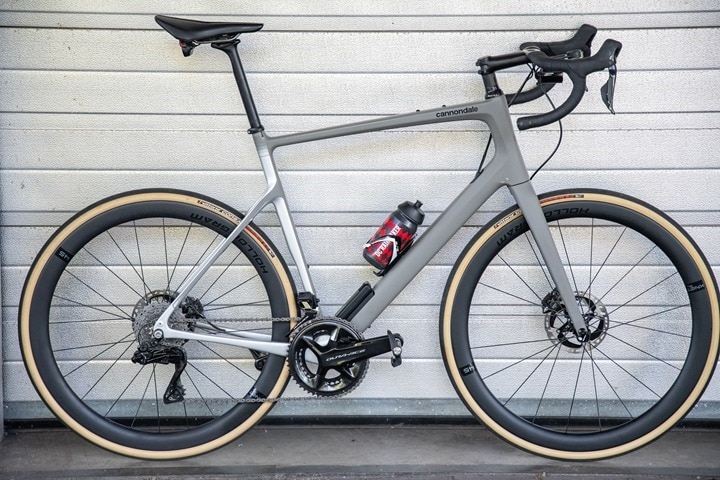

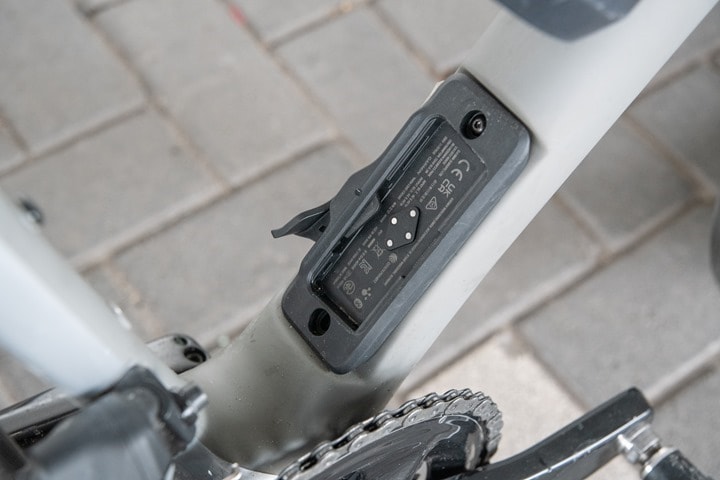

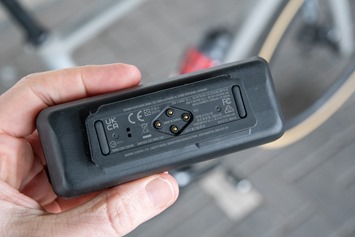
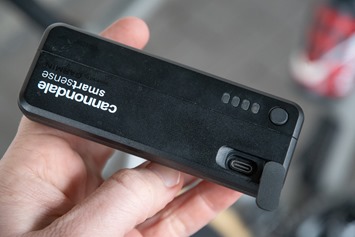

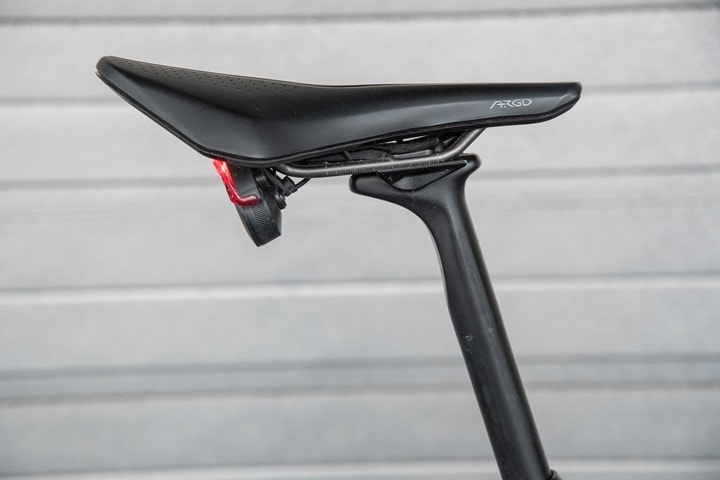
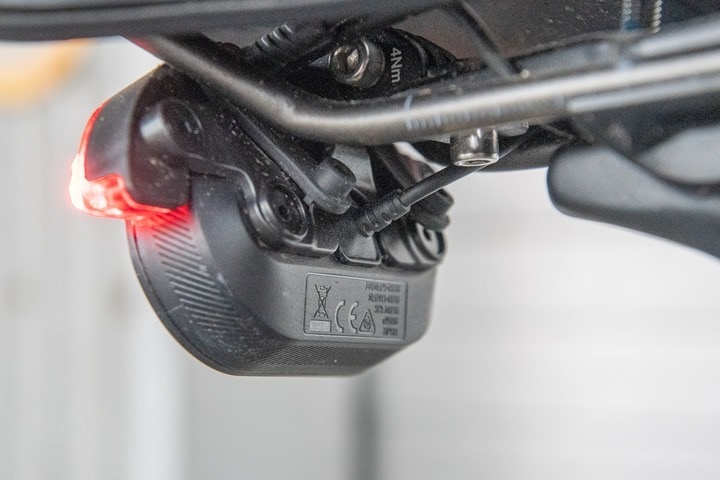
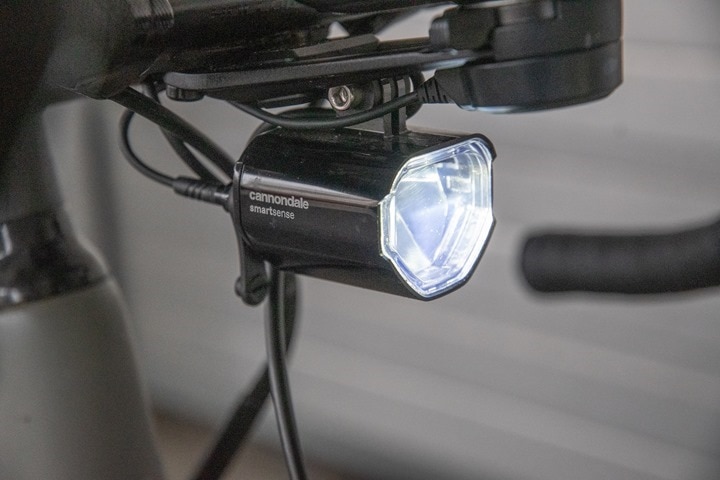
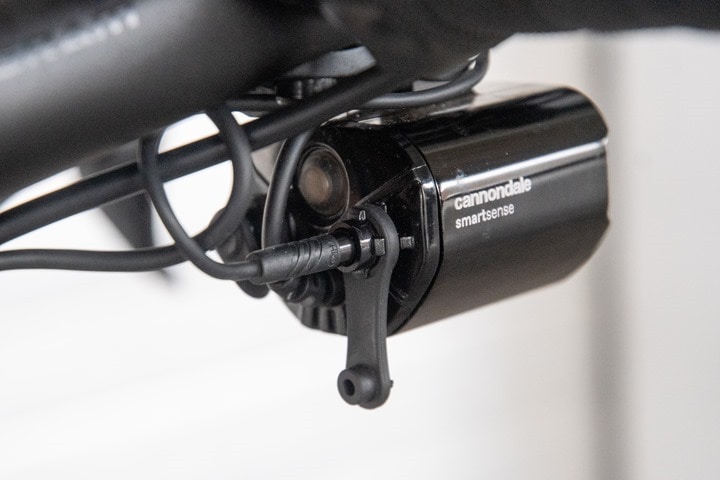
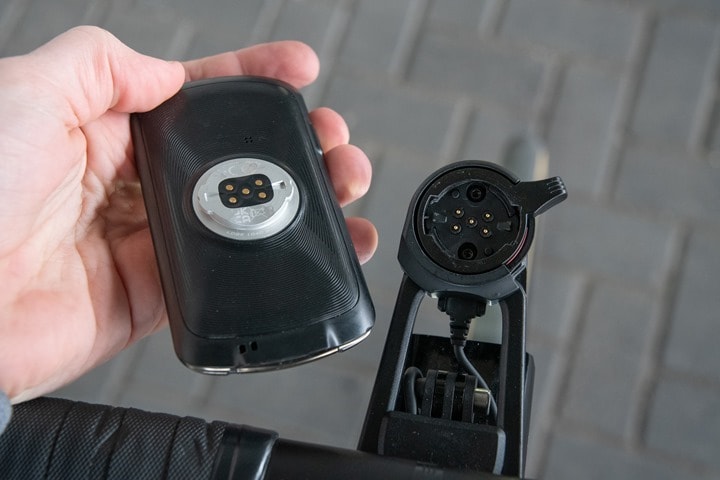
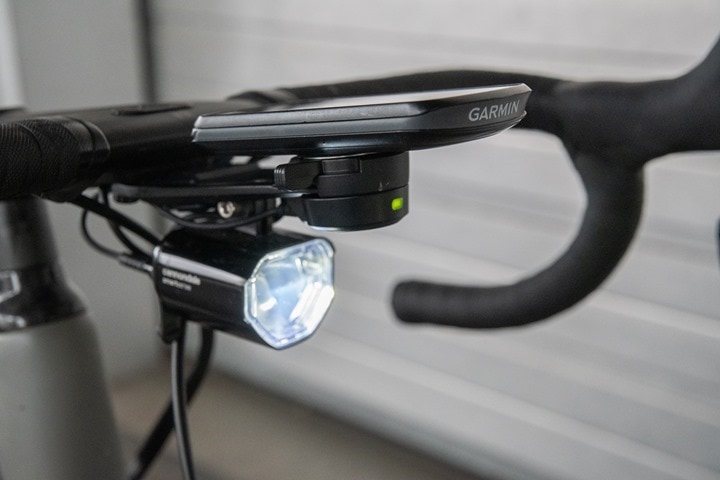
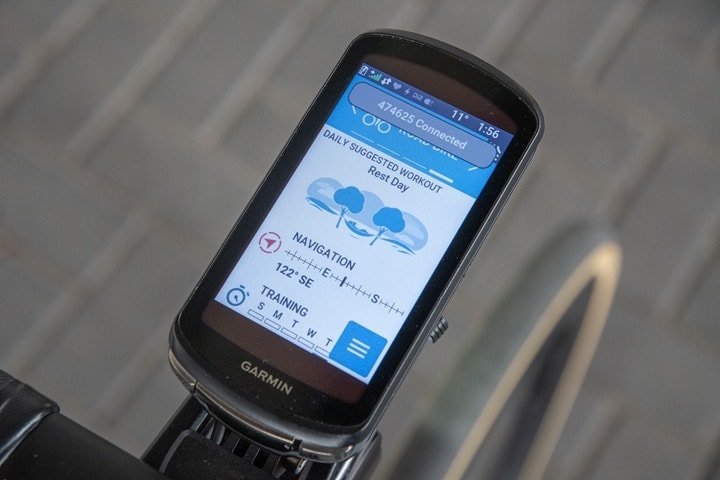

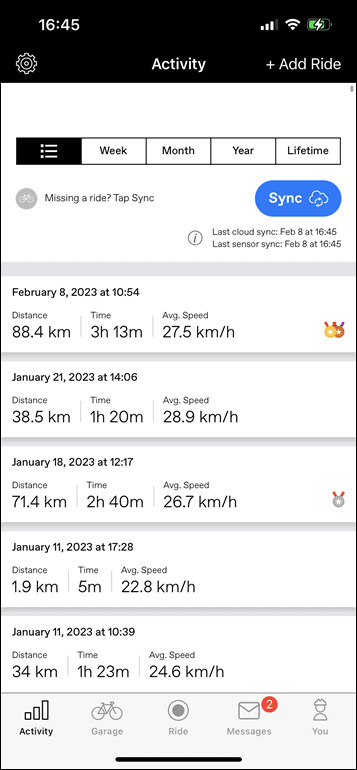
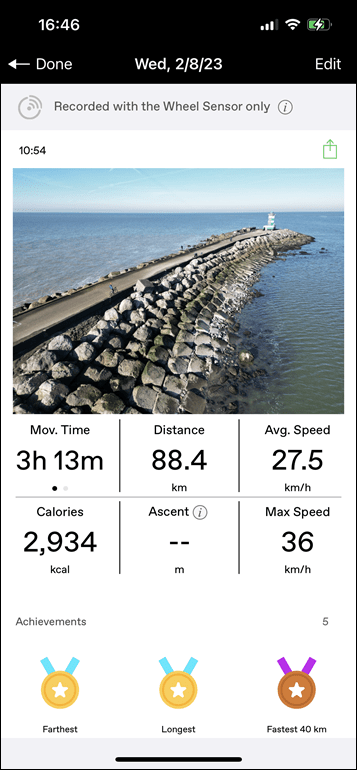

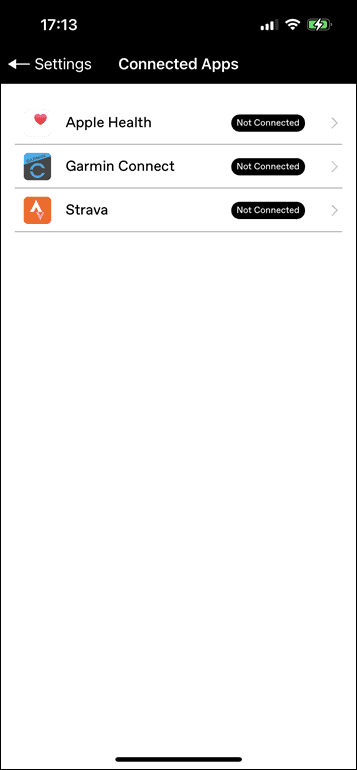
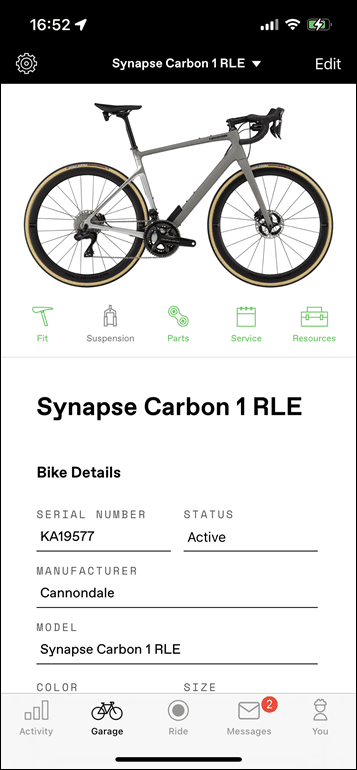
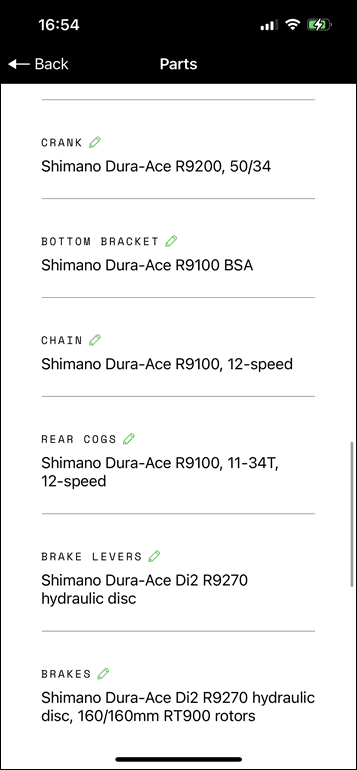
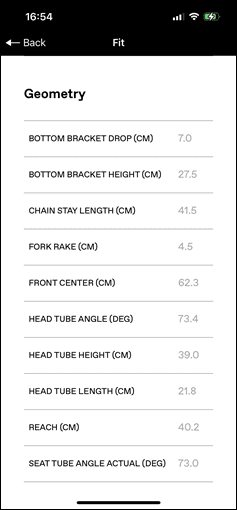
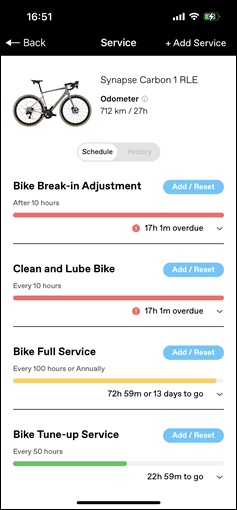

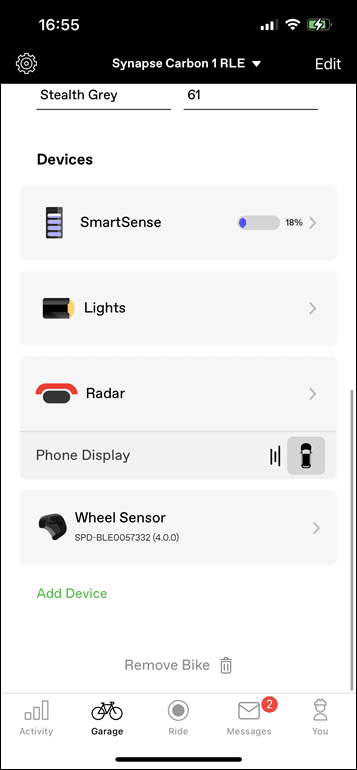
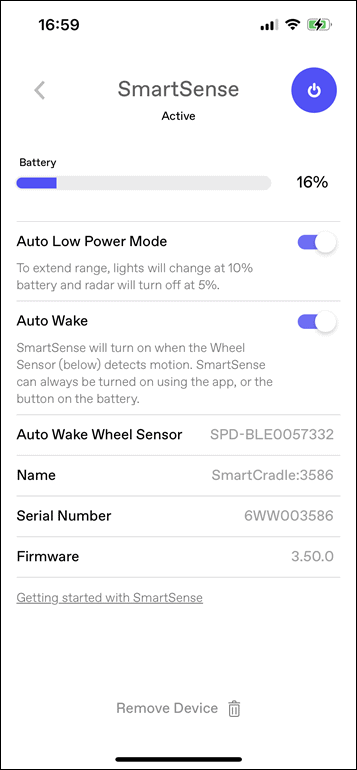
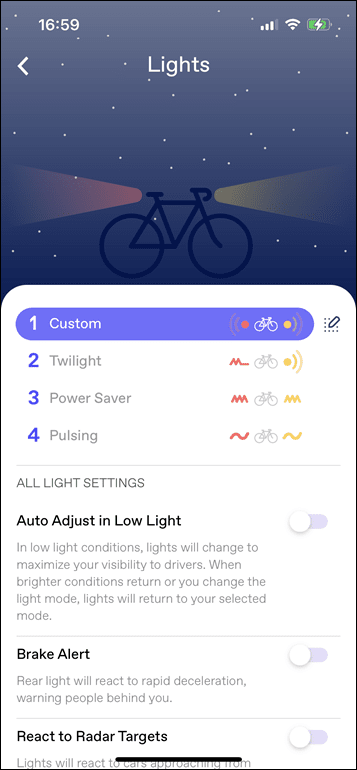

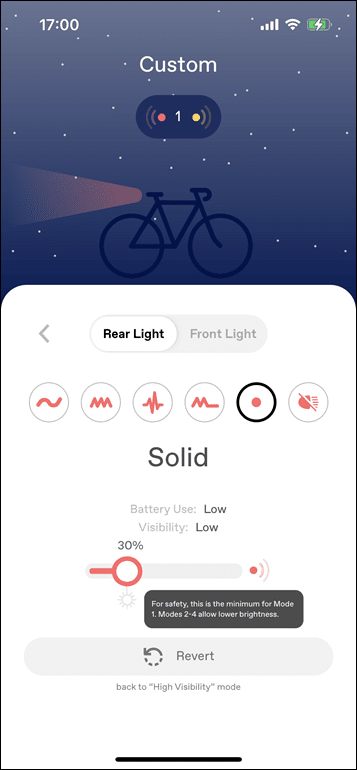
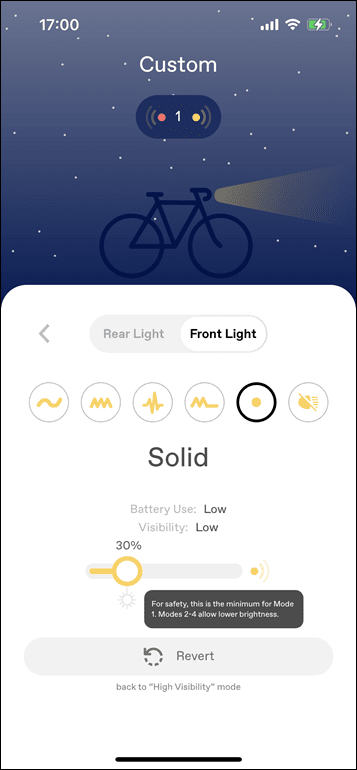
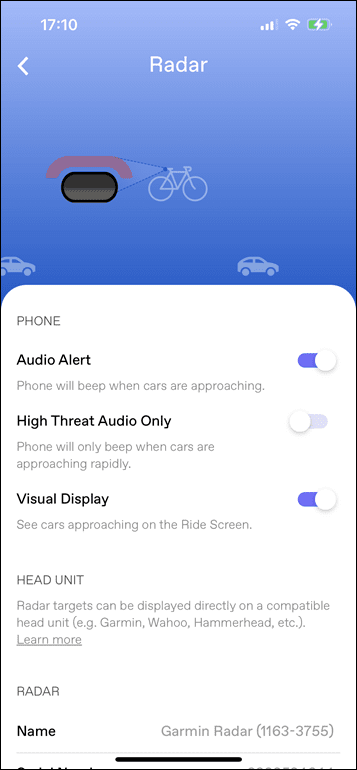
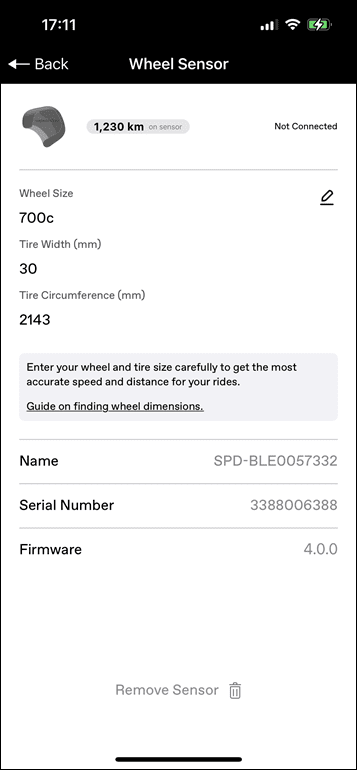
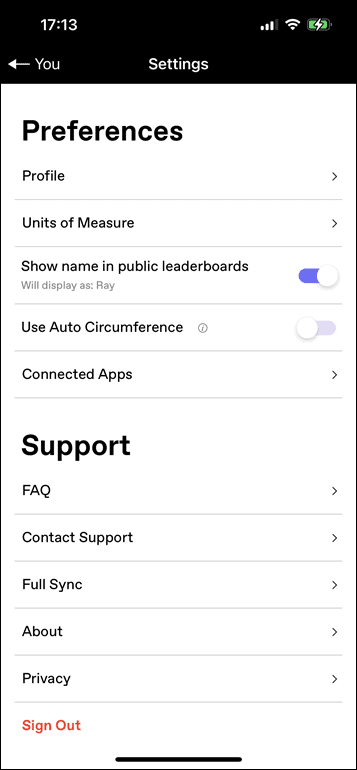
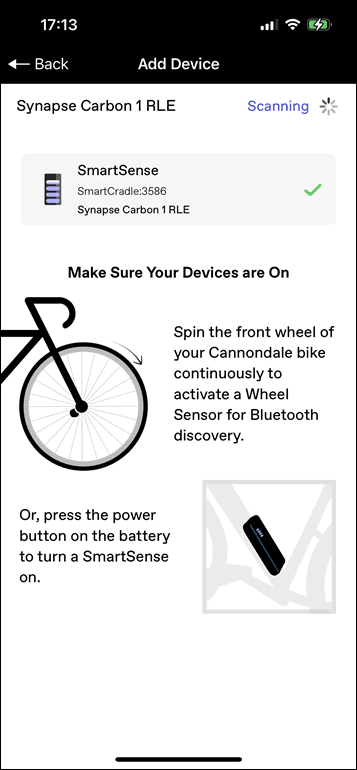
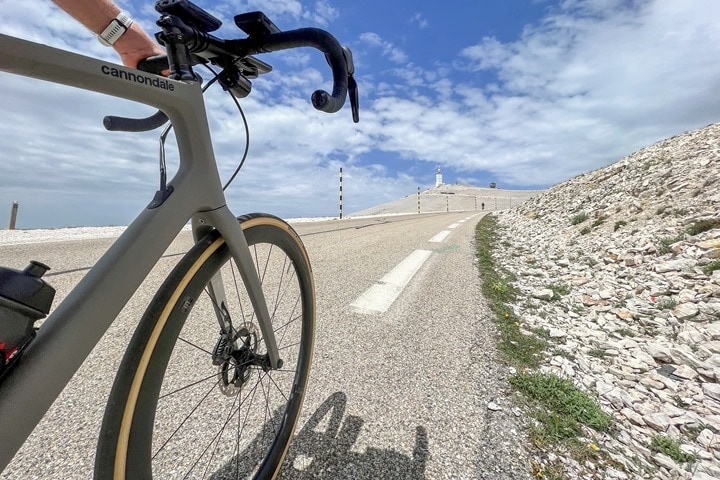
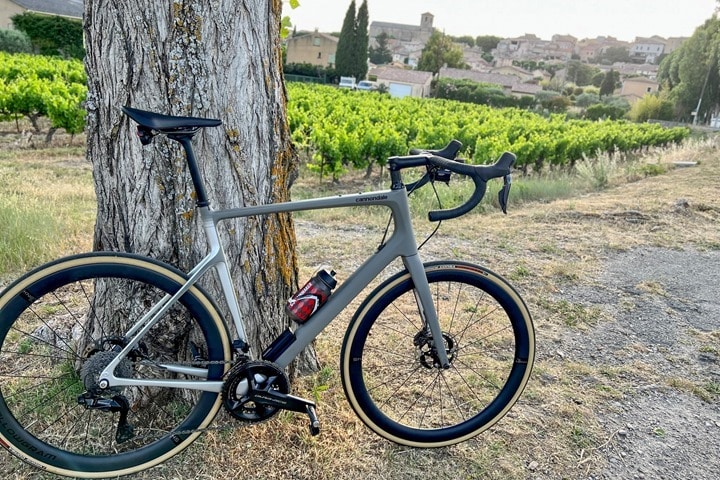

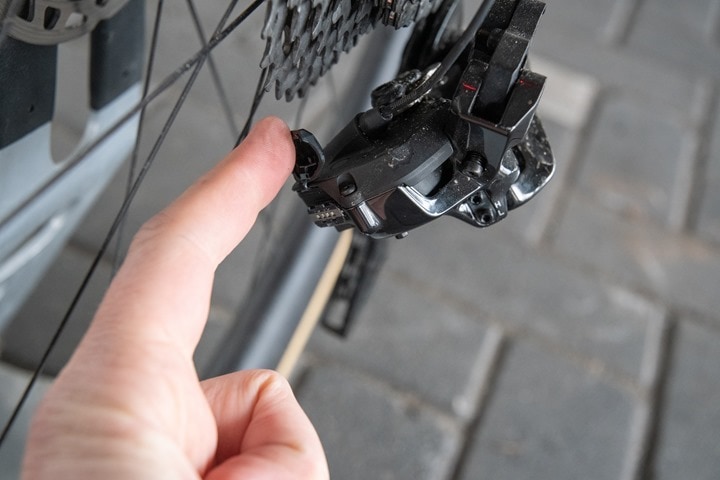
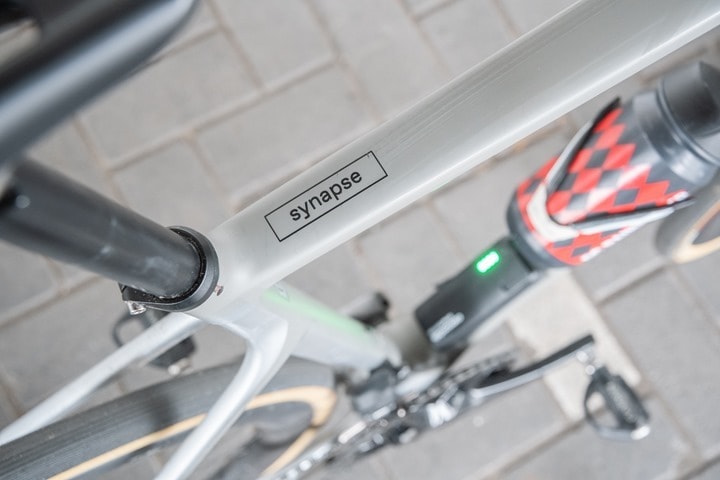


0 Commentaires